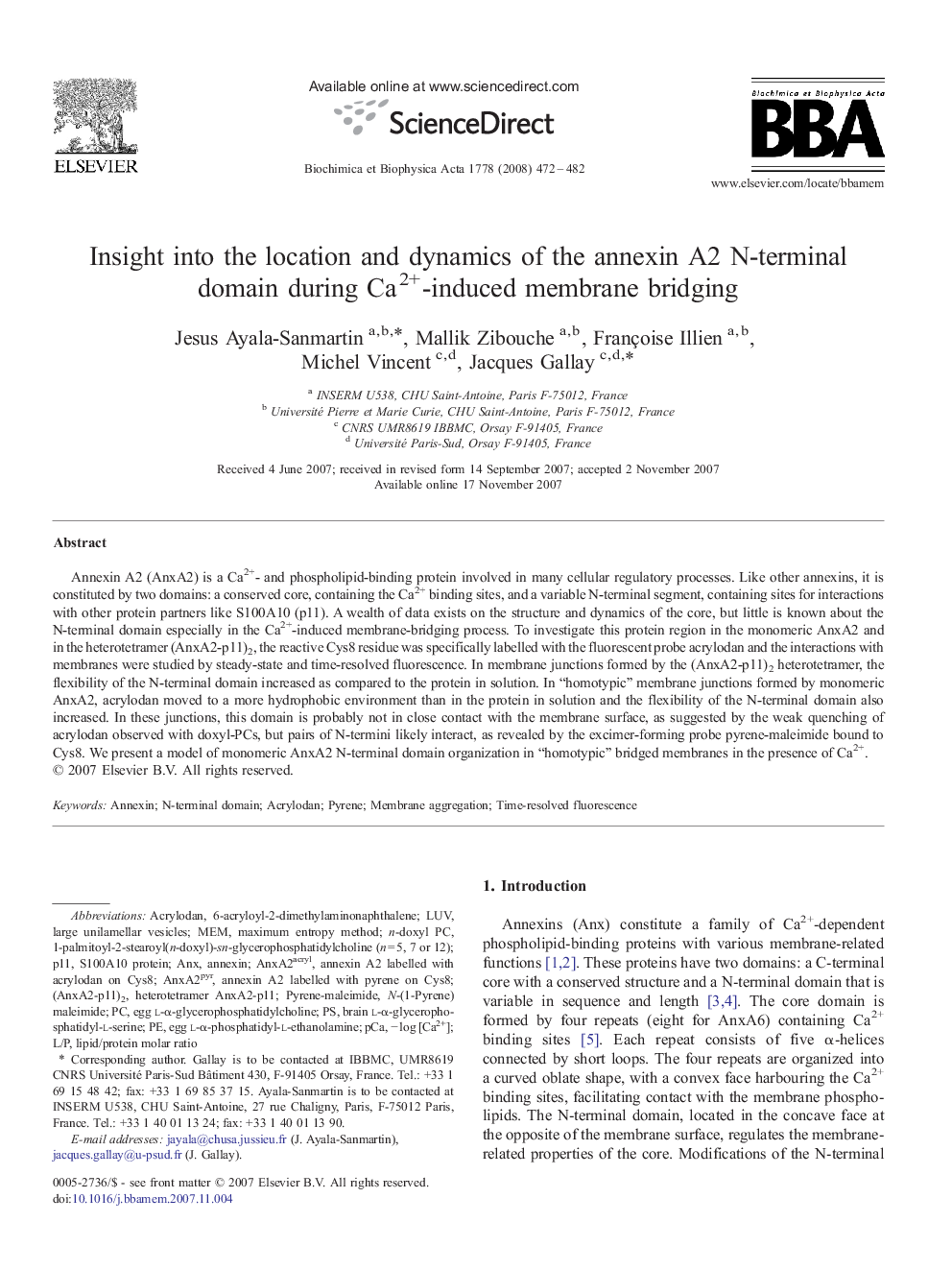| Article ID | Journal | Published Year | Pages | File Type |
|---|---|---|---|---|
| 1945505 | Biochimica et Biophysica Acta (BBA) - Biomembranes | 2008 | 11 Pages |
Annexin A2 (AnxA2) is a Ca2+- and phospholipid-binding protein involved in many cellular regulatory processes. Like other annexins, it is constituted by two domains: a conserved core, containing the Ca2+ binding sites, and a variable N-terminal segment, containing sites for interactions with other protein partners like S100A10 (p11). A wealth of data exists on the structure and dynamics of the core, but little is known about the N-terminal domain especially in the Ca2+-induced membrane-bridging process. To investigate this protein region in the monomeric AnxA2 and in the heterotetramer (AnxA2-p11)2, the reactive Cys8 residue was specifically labelled with the fluorescent probe acrylodan and the interactions with membranes were studied by steady-state and time-resolved fluorescence. In membrane junctions formed by the (AnxA2-p11)2 heterotetramer, the flexibility of the N-terminal domain increased as compared to the protein in solution. In “homotypic” membrane junctions formed by monomeric AnxA2, acrylodan moved to a more hydrophobic environment than in the protein in solution and the flexibility of the N-terminal domain also increased. In these junctions, this domain is probably not in close contact with the membrane surface, as suggested by the weak quenching of acrylodan observed with doxyl-PCs, but pairs of N-termini likely interact, as revealed by the excimer-forming probe pyrene-maleimide bound to Cys8. We present a model of monomeric AnxA2 N-terminal domain organization in “homotypic” bridged membranes in the presence of Ca2+.
